Lava Xolo X900 Review - The First Intel Medfield Phone
by Brian Klug on April 25, 2012 6:00 AM ESTGPU Performance - GLBenchmark 2.1
While Intel's Atom core is a newcomer to Android, the PowerVR SGX 540 used in Medfield's SoC has been around the block quite a bit. Most recently, Samsung's Galaxy Nexus used an OMAP 4 that features the same SGX 540 GPU. The GPU clock is a bit higher than we're used to at 400MHz (vs 304MHz for the Galaxy Nexus), but otherwise the design and its performance are both known quantities.
We start with GLBenchmark, one of the better Android GPU tests on the market today. There are two benchmarks, Egypt and Pro, and each is run in two modes: native screen resolution and offscreen (vsync disabled) at 720p. The latter is more useful for apples to apples comparisons as everything is rendering the same number of pixels, whereas performance in the onscreen tests is determined by the screen resolution of the device along with the performance of its GPU.
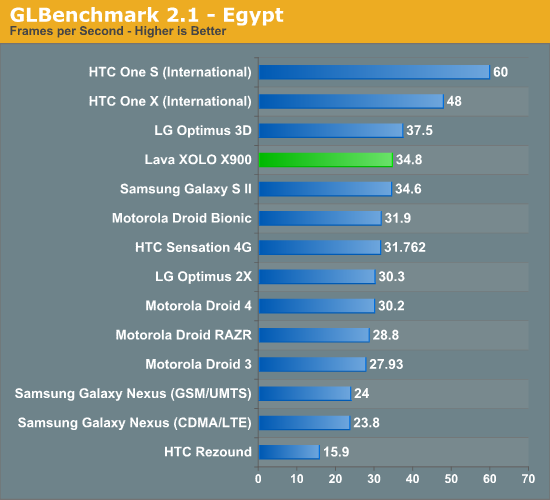
The X900 falls in just behind the Optimus 3D, which shares the same GPU but is running at a lower resolution. All things considered, the X900 does reasonably well here but it's definitely not leading the pack.
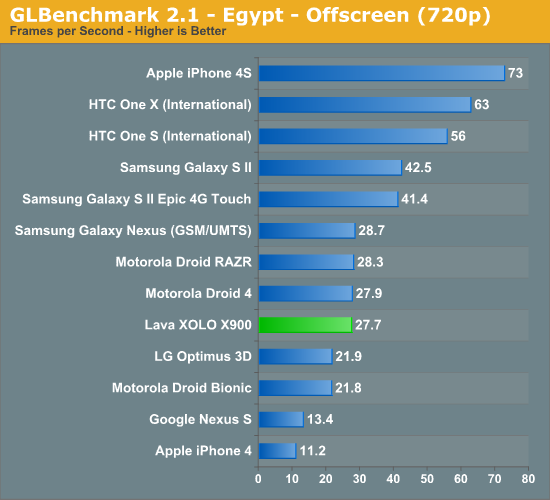
At the same display resolution and without any vsync limits, the X900 falls significantly behind the cream of the crop. Despite the GPU clock advantage, Medfield is no faster than OMAP 4 in the Galaxy Nexus here which is a bit perplexing. We're either bumping into a memory bandwidth limit or some other CPU/driver limitation. Either way, Intel definitely needs a faster GPU. We'll get it but not until early next year with the 544MP2 in the Atom Z2580.
The Pro results actually show us more of what we expected to see:
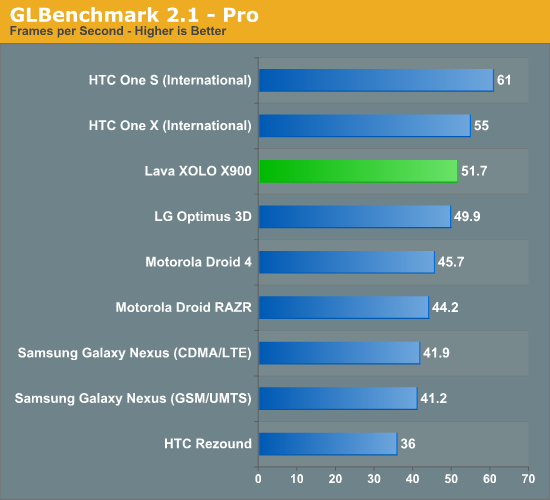
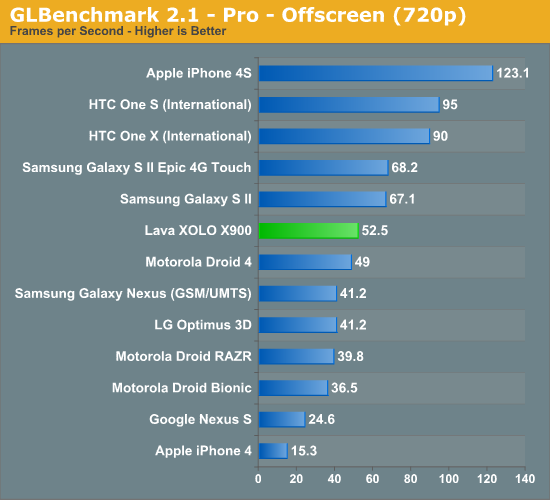
The offscreen tests give the Medfield based X900 a 25% advantage over the Galaxy Nexus, which makes sense. The Droid 4 is closer than that, despite also using the same GPU.
Basemark ES 2.0 V1
Rightware's Basemark ES 2.0 V1 is an aging GPU test that tends to favor Qualcomm's Adreno GPUs above almost all others. The Imagination Technologies based GPUs, such as the SGX 540 used in Medfield (as well as NVIDIA's Tegra GPU) don't fare as well here. Intel's GPU clock advantage does show up a little bit in these tests, making it the fastest PowerVR SGX based offering here:

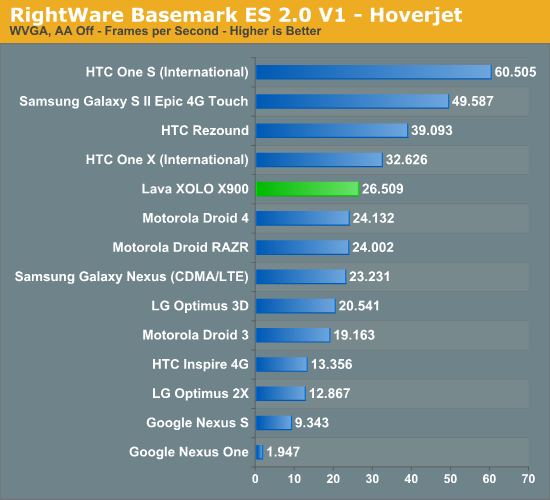










106 Comments
View All Comments
superPC - Thursday, April 26, 2012 - link
Well this atom only has 1/4 of conroe dual core transistor count right now. a move to 22nm could bring conroe level performance.Khato - Thursday, April 26, 2012 - link
Remember, conroe class performance simply indicates a general IPC level. I don't expect something on par with an E8600, more like a SU9600. It's quite feasible on the 22nm LP process, and actually is roughly in-line with the one Atom performance roadmap from awhile ago.extide - Wednesday, April 25, 2012 - link
That wont be happening for a while, but from what I have heard 2013 will bring us a second gen (out-of-order) atom on a mature 22nm process. We should see 2Ghz+ clockspeeds and 2 cores, plus a healthy IPC boost. This is going to be an exciting battle to watch, the old Intel vs AMD gig is kind of stale, so its awesome to see a real challenge for Intel again!A5 - Wednesday, April 25, 2012 - link
ULV Haswell will have a TDP an order of magnitude too high for a phone form factor. Tablets, maybe.MonkeyPaw - Wednesday, April 25, 2012 - link
"We waited years for Intel's first smartphone, now the question is how long do we have to wait for the first irresistable one?"It wont matter. Intel will dump millions into advertising, and every single phone maker will have ads for their new x86 phones, ending with the usual Intel chorus.
dougys - Wednesday, April 25, 2012 - link
I read somewhere else a few weeks back that the iPhone 5 could have Intel Inside. However, something else I read suggested that if they were to do this all the apps would have to be re-written... Does anyone have any thoughts/insight?tipoo - Wednesday, April 25, 2012 - link
Apple has a few architecture changes under its belt, but I very much doubt it, not for this chip. Apple bought chip design companies and spends more on internal chip design year after year for good reason.Not sure about iOS compatibility but this chip can run any Android apps just fine as the article points out through binary translation, I think Android apps use Java and iOS uses C++ though so I'm not sure if that would still work.
If Apple was to go to an outside design for its chips (which I highly doubt it will) I'd hope it would be for Qualcomm, Krait is amazing.
dcollins - Wednesday, April 25, 2012 - link
Apple will not move to an Intel chip anytime soon because they have been very successful in designing their own SoC. Just look at the battery life benchmarks: Apple crushes everyone in Hours/Watt*Hour. Plus, doing it in house gives them more flexibility on the overall design of their boards.There is a small chance of Intel manufacturing chips for Apple, but that is a long shot as well. Chips manufactured on Intel's 22nm 3d gate process would be incompatible with chips produced on competing 28nm processes (different physical size) and Apple is traditionally opposed to single sourcing crucial components.
tipoo - Wednesday, April 25, 2012 - link
Why does the GN get worse flash performance than the Nexus S and even Nexus One? That isn't a resolution dependant test, right?I'm also curious why the dual core Atrix barely does better than the single core Nexus S in Vellamo, was that just a bad SoC design or is it because it runs an older OS?
tipoo - Wednesday, April 25, 2012 - link
I also just got 915 on my Nexus S rather than 622, but I'm using an unofficial Cyanogenmod 9 build from XDA forums.